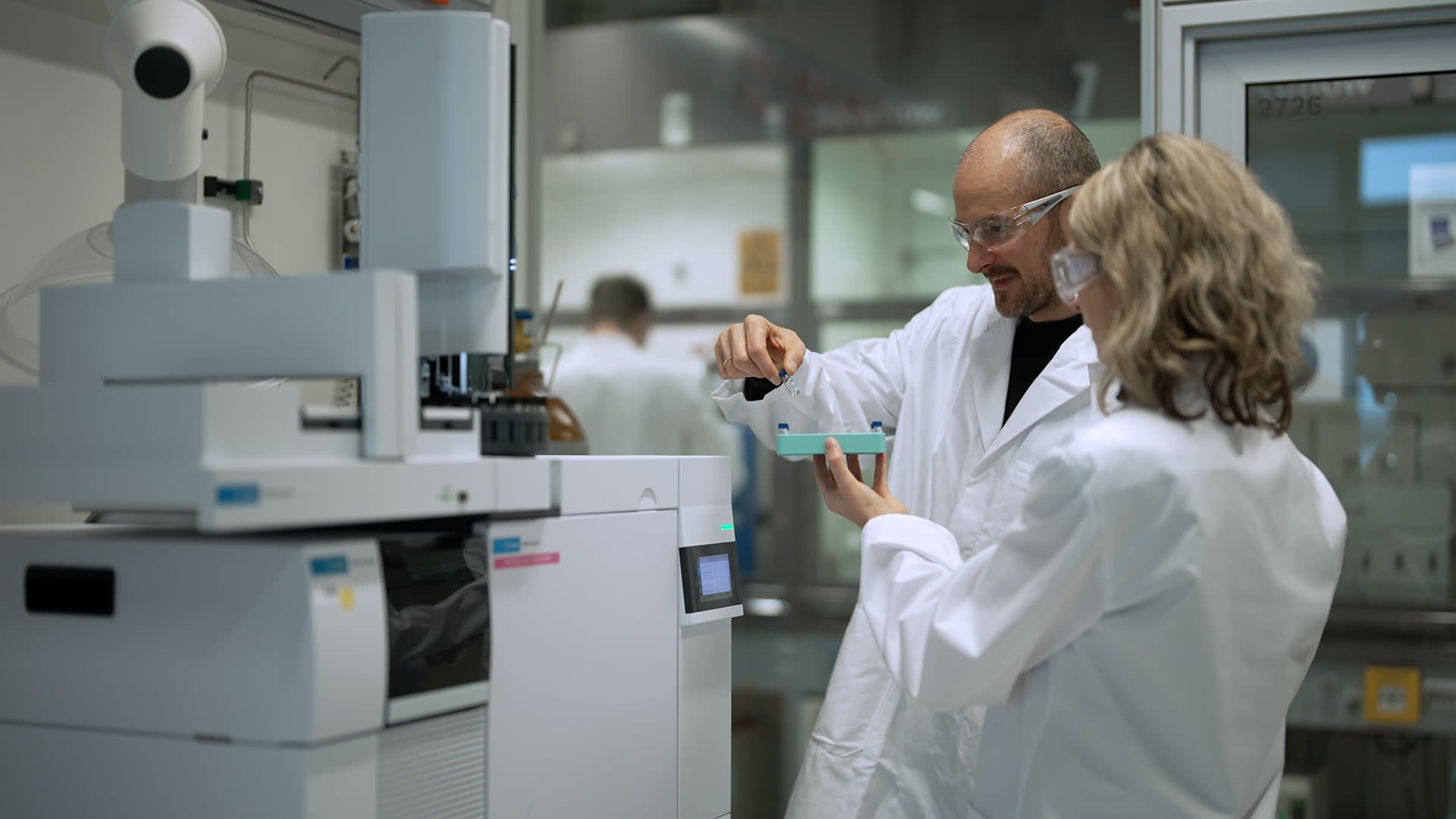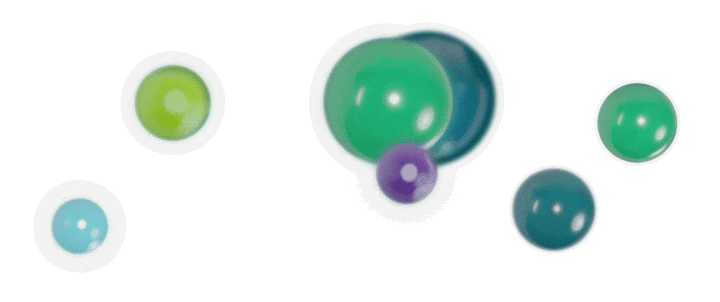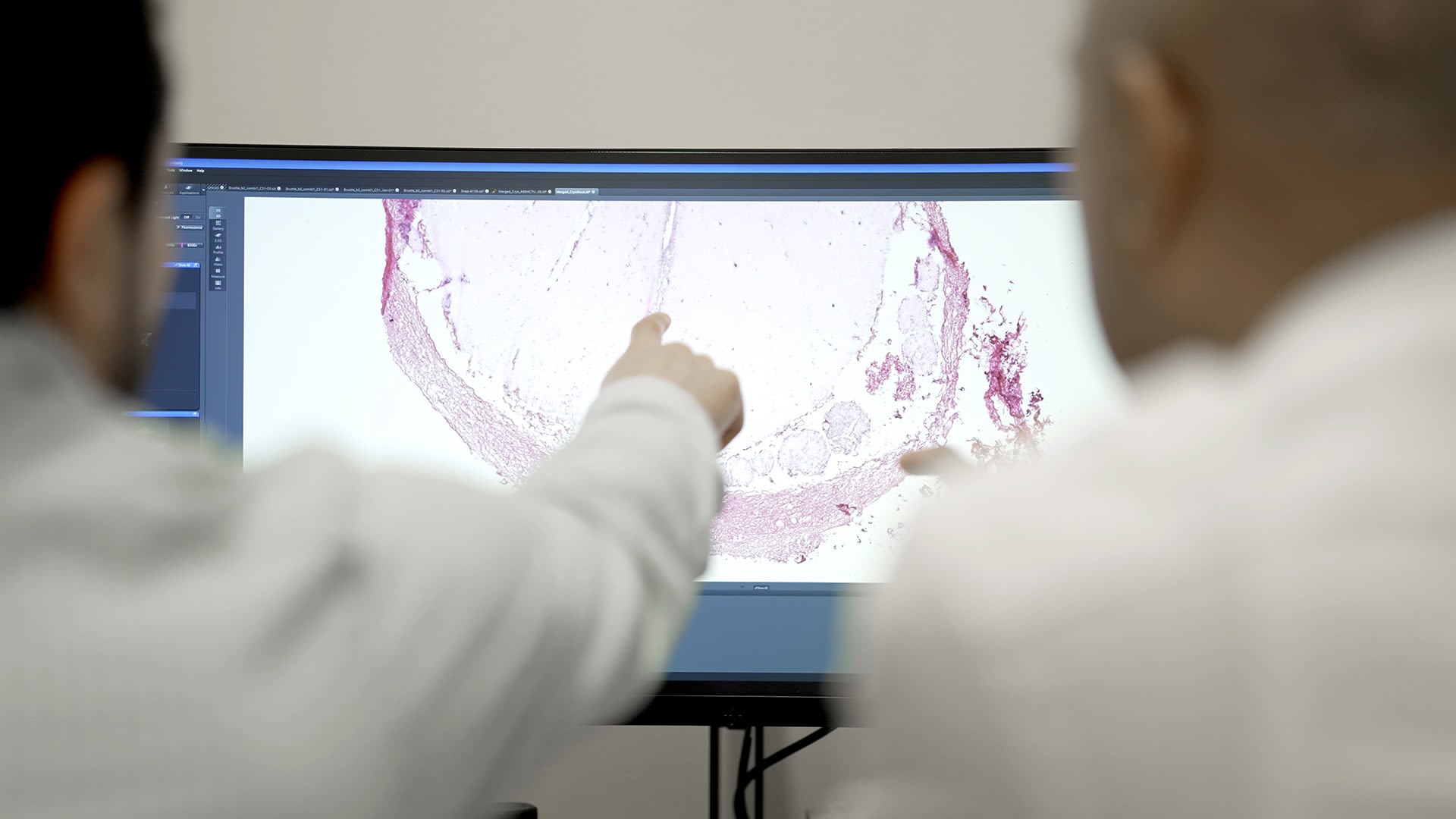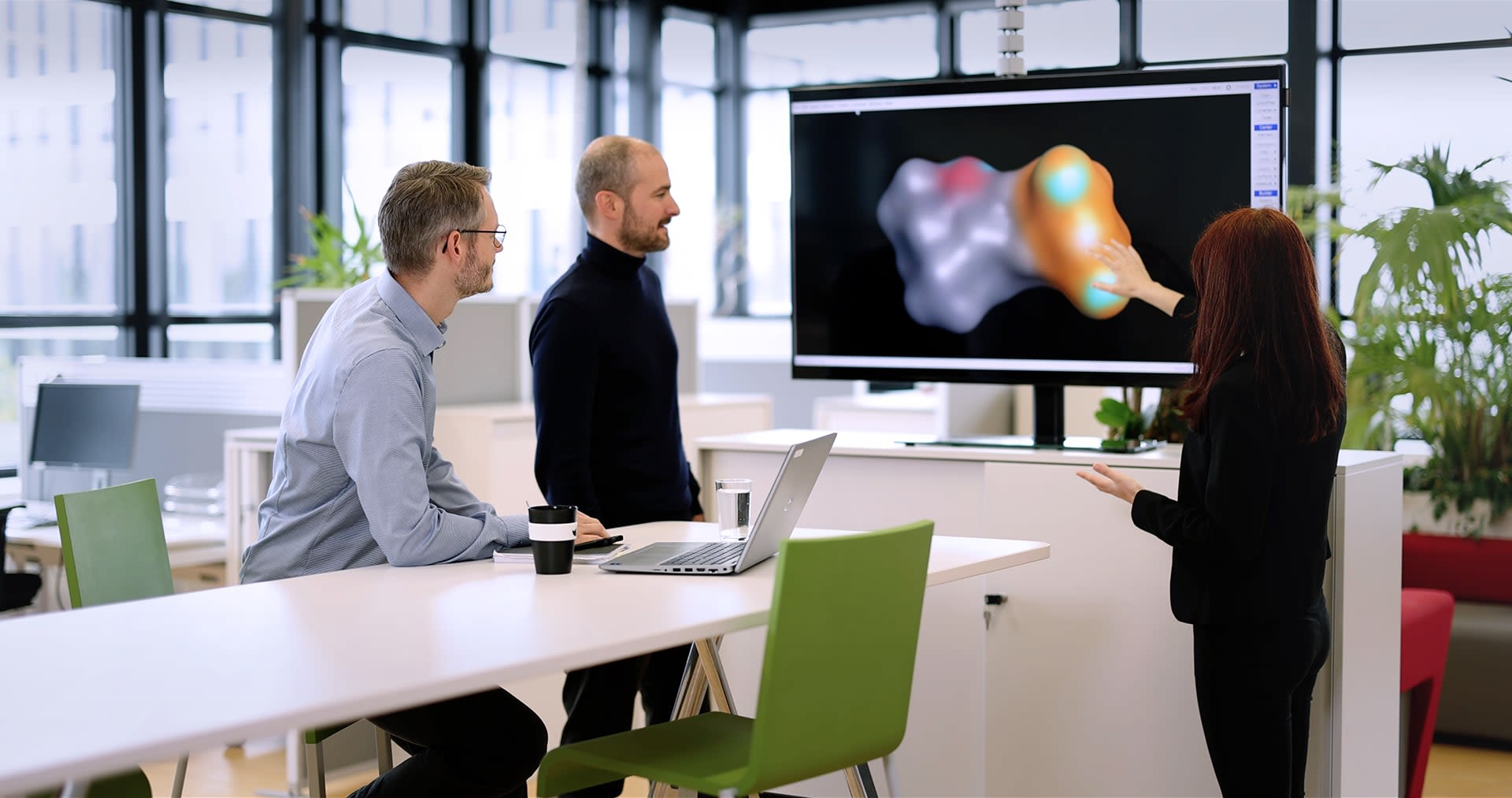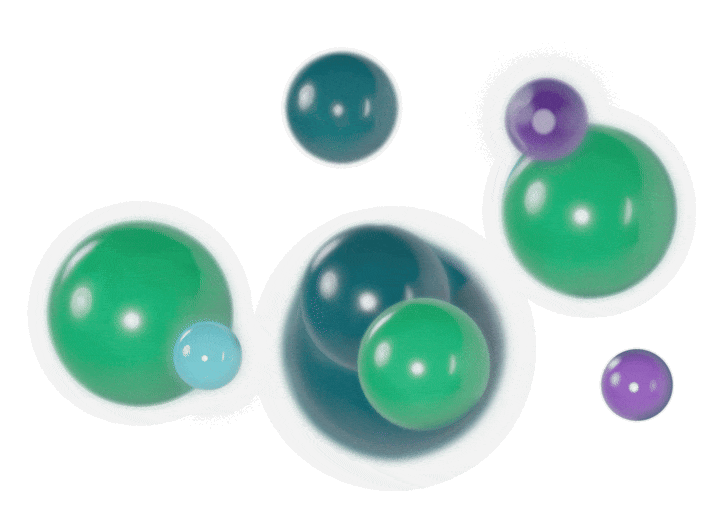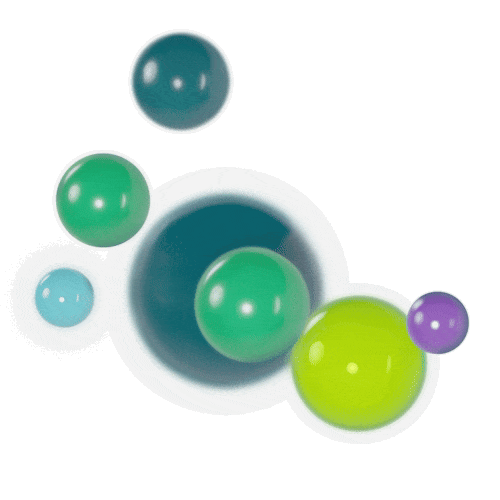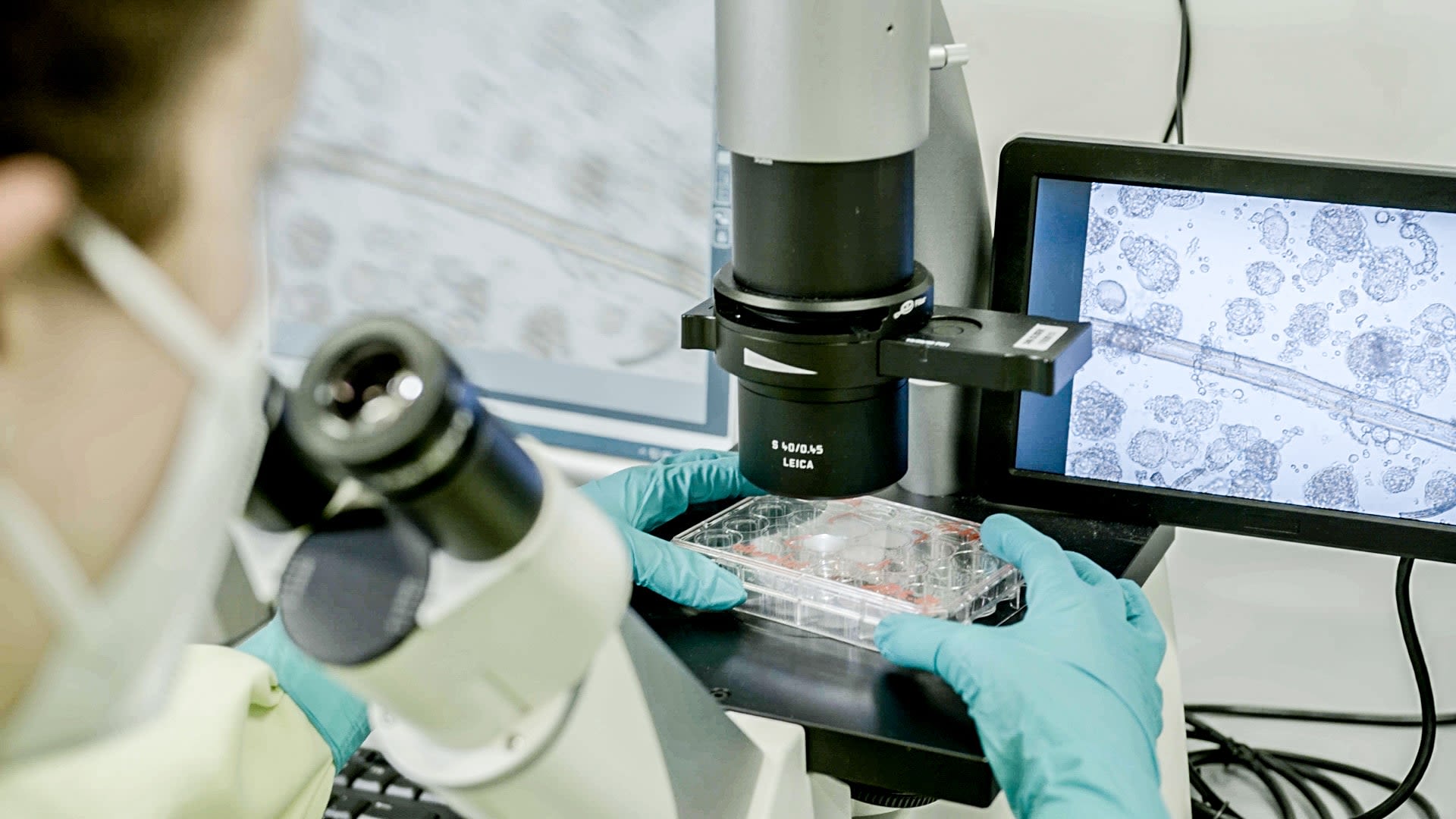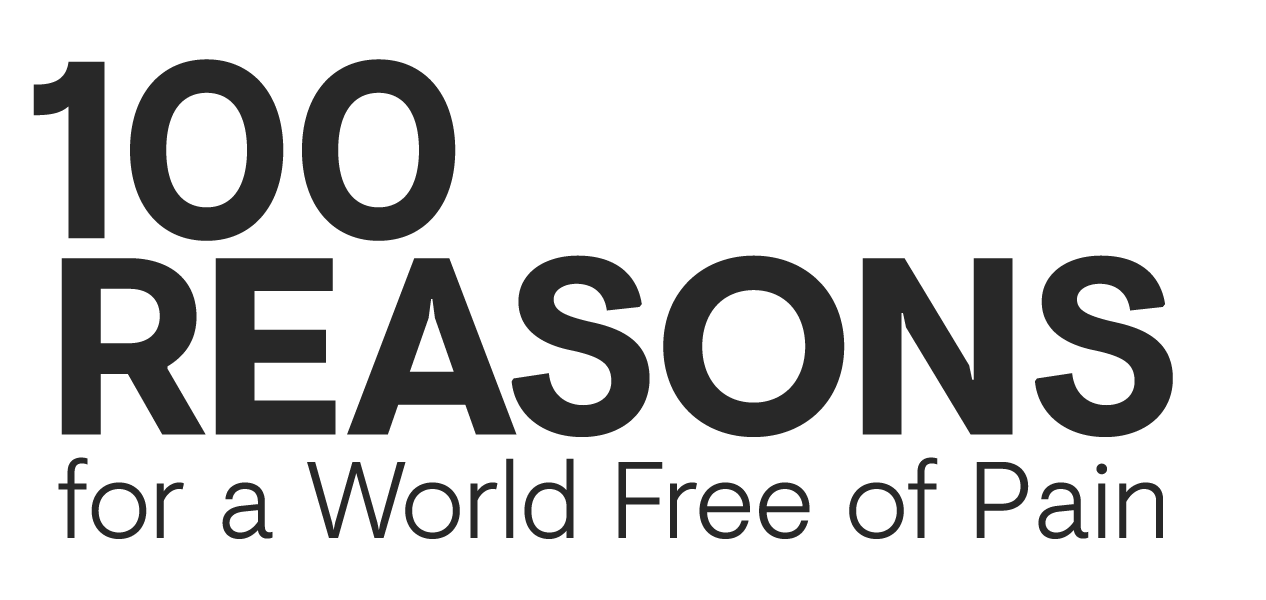
Fascination for research and innovation
On the hunt: Finding molecular keys that can unlock relief in the human body
Grünenthal pursues its vision of a World Free of Pain through extensive research and development. Experts from a variety of disciplines, from biologists and chemists to medical doctors, pharmacists and AI experts, constantly search for new substances that could become active ingredients of innovative pain therapies – driven by the needs of millions of people who suffer from chronic pain around the world.
The motivation:
Improving lives
Living with chronic pain feels like carrying an invisible weight. It impacts everything – patient routines, their mental health, their relationships. It’s a daily battle that requires resilience, often reshaping how those affected interact with the world – and how the world interacts with them.
At Grünenthal, we work for a world free of pain. What keeps us going is the profound impact our work has on patients’ lives. Our mission is to offer innovative and differentiated therapies, especially for those whose pain has been resistant to available treatment options and standards of care. We know that it is only a lasting change, not merely temporary relief, that empowers patients to regain control over their lives.
The likelihood of a molecule from my lab reaching a pharmacy is very low, but the ultimate drive is knowing it could one day help people. That’s my greatest motivation.
Stefanie Ritter, Head Innovation Chemistry Laboratory
We appreciate every molecule we create and test because it might be the one that passes all trials and regulatory hurdles – and helps a person hoping for relief. Working at Grünenthal means making a difference for patients, as we pursue a future where pain no longer dictates the limits of what people can achieve
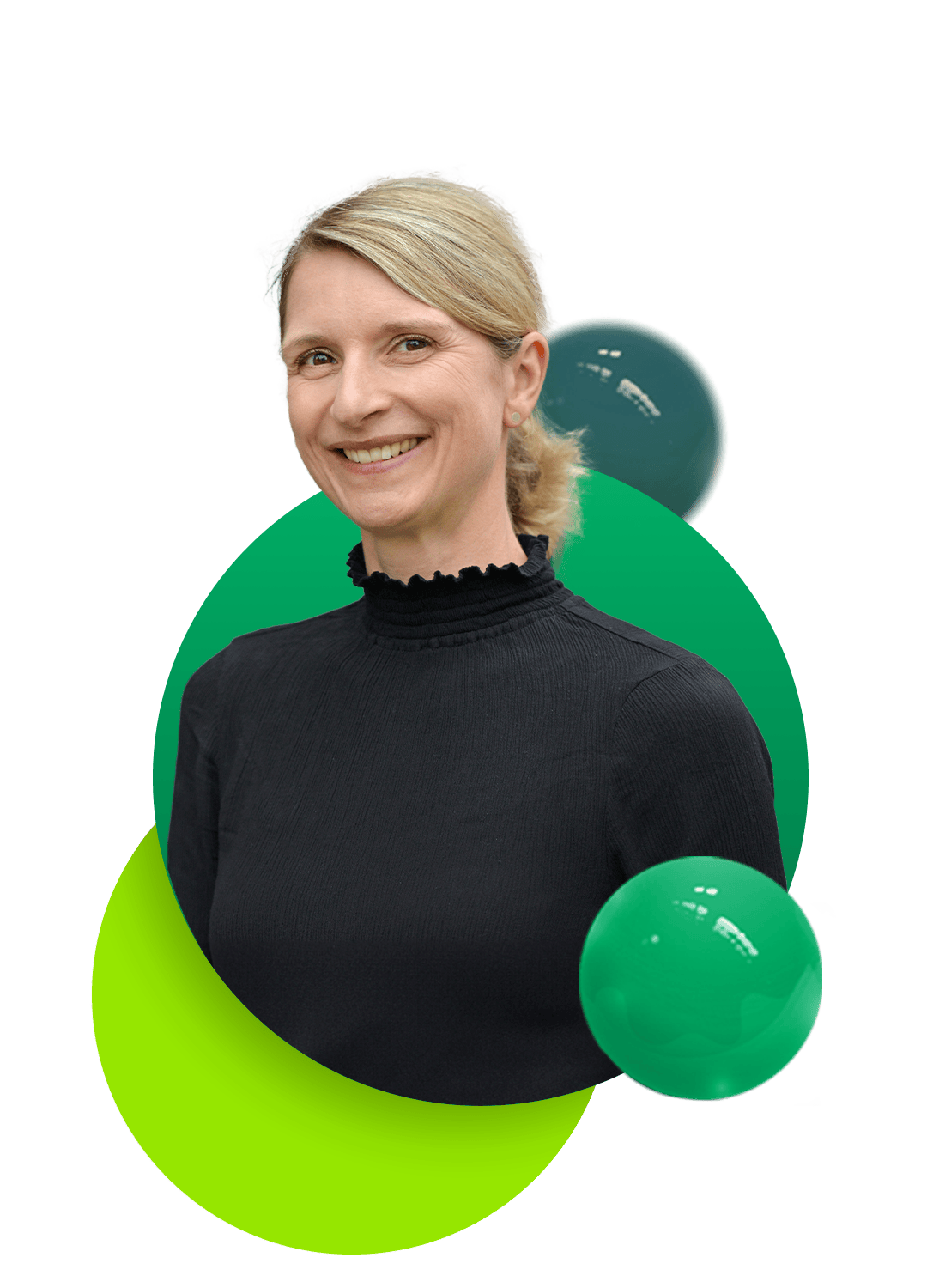
The groundwork:
Understanding pain.
Before we can effectively find molecules that can relieve pain, we must understand its pathophysiology. That’s a challenge, because pain is something we all feel differently. We can hardly measure personal perception in numbers or scales. But we can rely on our scientific curiosity and our appreciation for the complexity of chronic pain.
Learn more about the fundamentals of pain.
We follow a holistic approach to understanding pain, building our programmes on a firm foundation of human pathophysiology and human target validation. We reinforce our internal innovation capabilities through long-term R&D partnerships with leading institutions around the globe, always seeking to strengthen and expand our network of leading scientists. With our Innovation Hub, we have established a centre of excellence for pain research in the world’s most vibrant biotech community. We always put patients’ needs first. Ultimately, it is this dedication to both – science and the broader impacts on individuals’ lives – that leads us forward in our mission to alleviate pain and improve the quality of life for those who suffer.
The challenge:
Finding new substances
Discovering new substances equals a relentless pursuit of precision and innovation. Our teams are on the hunt for molecular keys that can unlock relief within the human body. This process is akin to the work of a key maker trying to find that one perfect key for a evaluation, and interdisciplinary teamwork is needed to shape ideal structures ready for the lab’s synthesis.
The fascination begins at the molecular level. Our researchers break down molecules into their elemental parts, reassembling them with the finesse only a deep understanding of chemistry can afford – and each single one has the potential to create significant impacts. Continuous optimization ensures these molecules are as specific and effective as possible. And even those molecules that don’t perform as hoped turn into stepping stones toward discovering the perfect therapeutic agent.
What’s most important: the focus on human validation and translational science. By working with primary cells and tissue samples from human donors, we look at what happens at the cellular level in the human body. This method allows us to validate our findings in models that progress from simplicity to complexity while always mirroring the human organism. It’s a shift that brings the potential for faster and more relevant medical advances, bypassing often unreliable results from non-human models.
“We don’t have enough medications to adequately treat everyone with chronic pain, which is why our continued efforts are essential.”
Katrin Fleischer, Head Global Regulatory Strategy
The path from the lab to pharmacy shelves is a long one. Ensuring every step of the research and development process meets stringent regulatory requirements from the start is the very basis of market approval. Finding new substances at Grünenthal means working in a way that is scientifically robust, strategically sound, and focused on improving patient outcome to create a tangible real-world impact. It’s this dedication that positions us at the forefront of innovation, one molecule at a time.

The perspective:
Pioneering new technologies
Pioneering new technologies means reshaping how we approach drug development and research for chronic pain. Over the years, we’ve made tremendous strides in leveraging advanced technologies to enhance our scientific processes, representing a significant leap in our capabilities.
Through the use of advanced AI-enabled algorithms, we have moved beyond traditional manual methods of extracting information from microscopic images. AI helps us to process large quantities of data efficiently and empowers our researchers to gain deeper insights into the cellular level of human tissues. This significantly improves the speed and reliability of our research. And it helps us to develop eWective medication faster.
“Securing a consistent supply of human tissue and cells, and leveraging AI to automate processes and minimize human error and variability, was a significant leap forward in our efforts.”
Omar Mossad, Disease Biology Scientist

We’ve strategically shifted towards using human tissue samples earlier in the drug development process. This reduces our reliance on animal models, paving the way for faster, more ethically-aligned pathways to create patient-ready medicines. The ability to directly verify our research in human samples signifies a groundbreaking shift in our pain research, allowing us to use methodologies that are innovative and effective, and accelerates our path from lab discoveries to real-world applications.
With the rise of genetic medicine approaches, we are working on bringing these into the therapeutic area of pain, building up strategic capabilities such as our laboratories dedicated to creating oligonucleotides. Oligonucleotides are a key element in genetic medicine because, for example, they can be used to reduce the creation of a specific protein and thus its undesired effect.
They achieve this by binding to a particular sequence of human messenger RNA complementary to their own structure. This ‘turns off’ the messenger RNA and prevents it from creating the protein it codes for.
One of the advantages of oligonucleotides is their precision. When optimized, they only influence the production of the one protein we want to manipulate and no other protein in the human body.
By keeping pace with scientific progress, we create a future where pain management solutions meet individual requirements of those who suffer.
Science forward
Always exploring the latest science
R&D teams at Grünenthal are at the forefront of scientific progress within the pharmaceutical industry.
Our experts investigate ways for new technologies to open up transformative treatment options for patients. From leveraging single-cell methodologies through to unleashing the power of AI to accelerate our research activities, we are always embracing the possibilities of future-facing science.
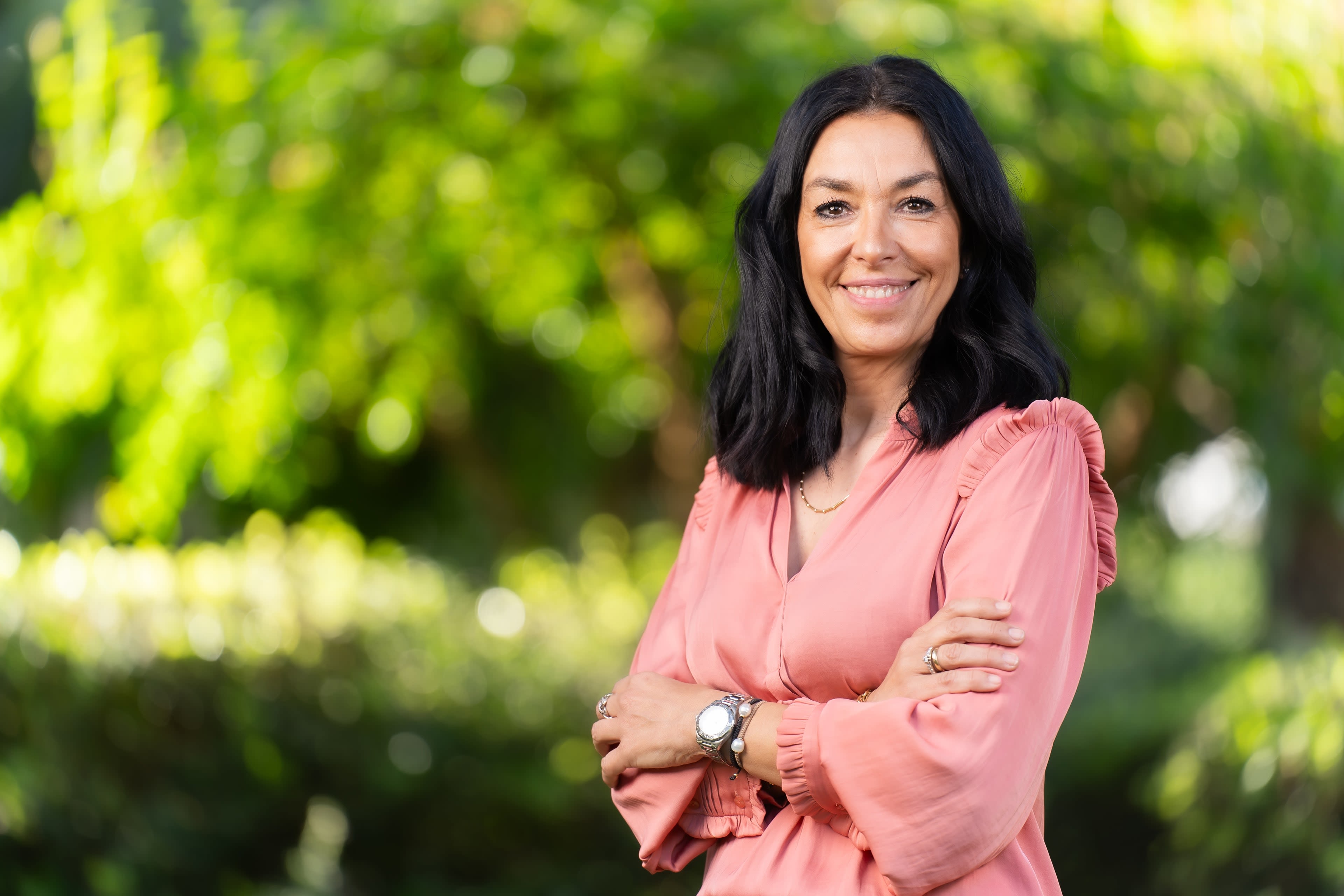
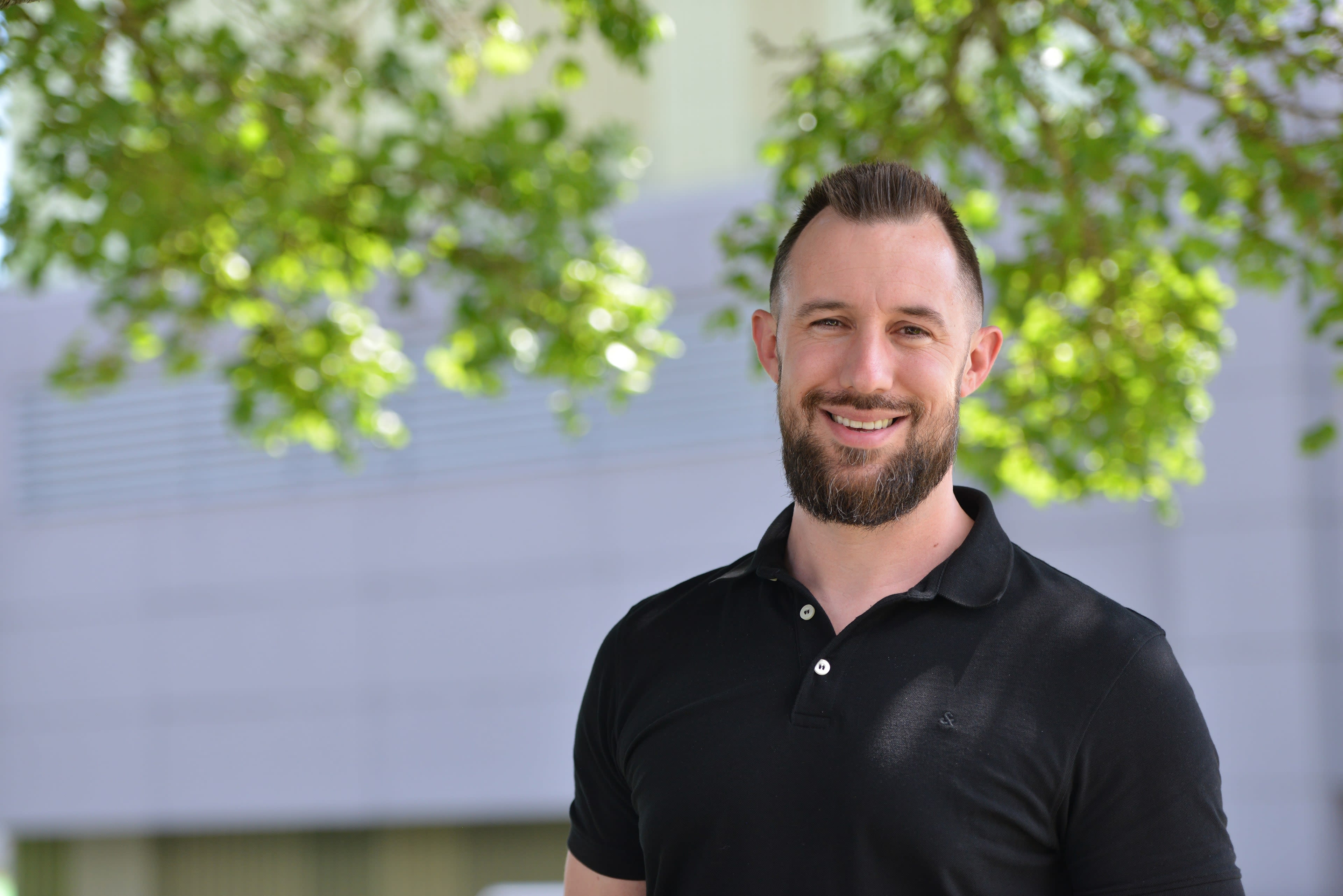

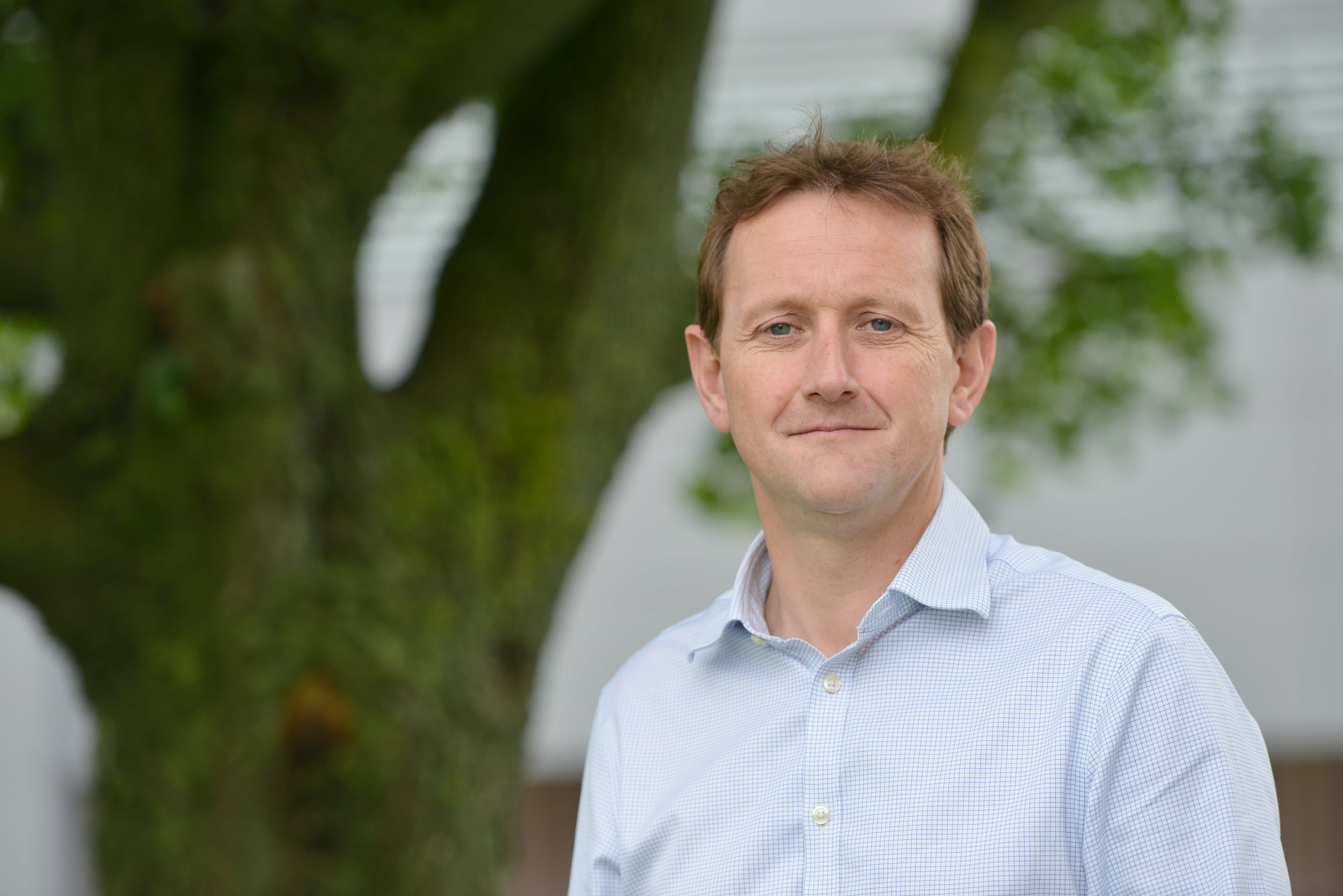

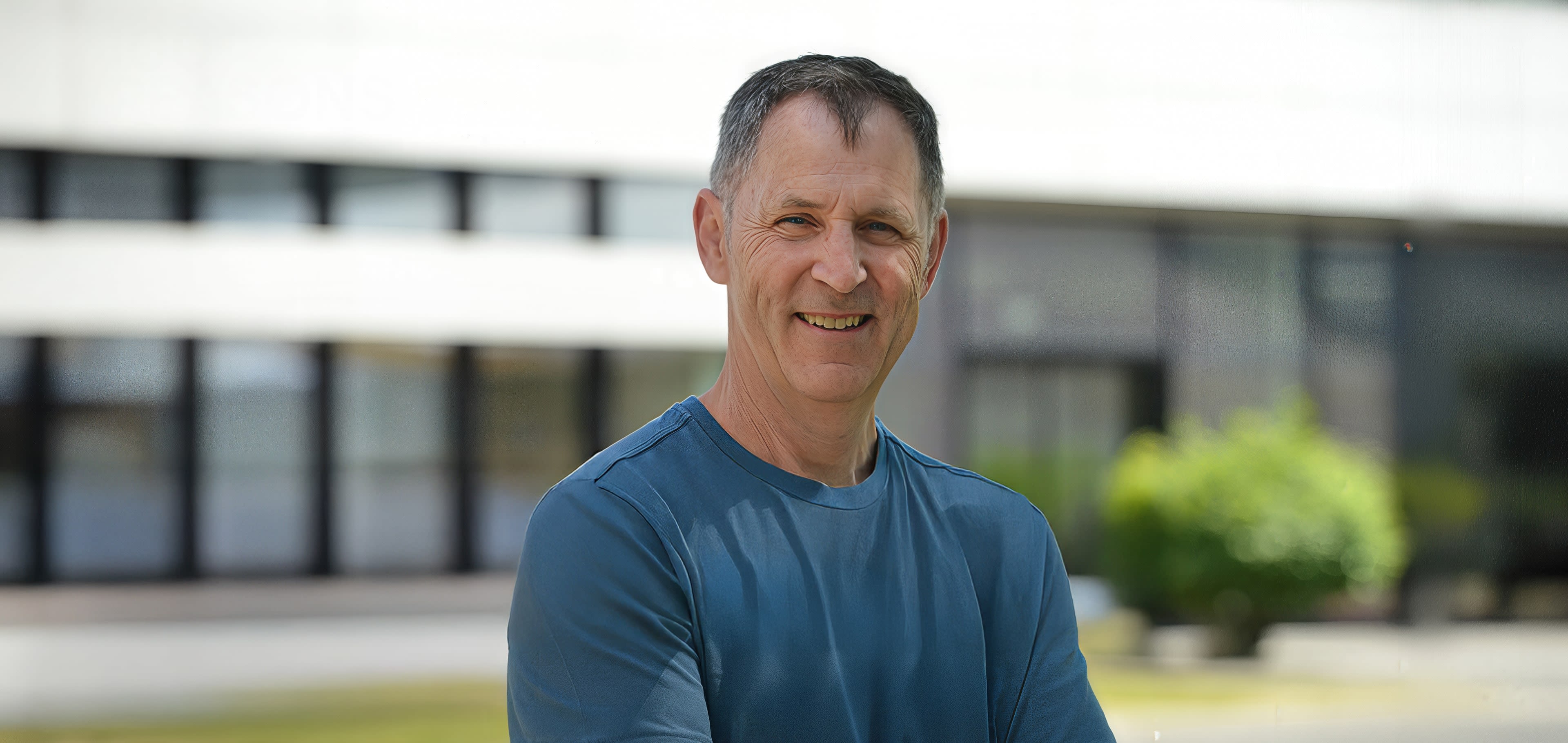

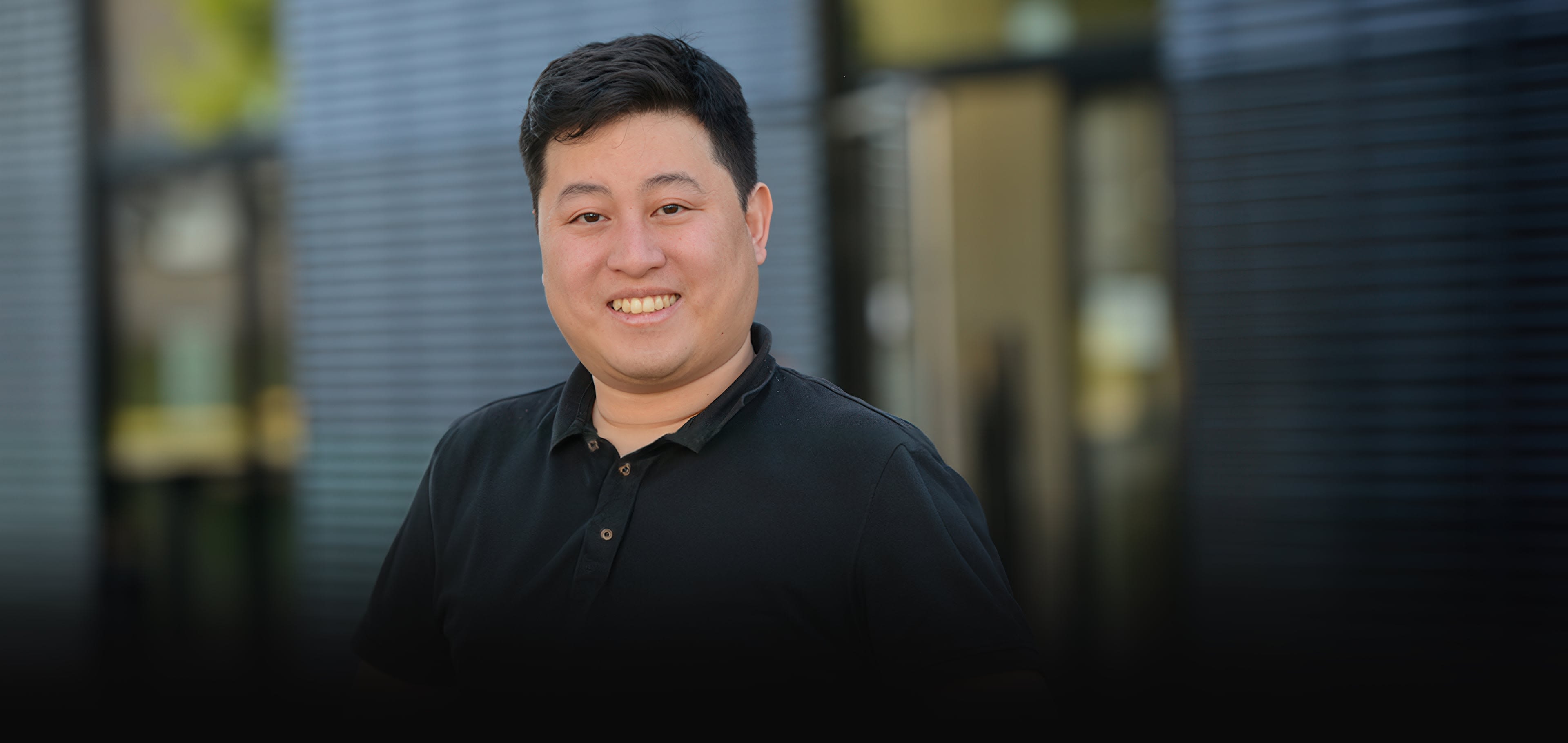
"What really matters is how much we have been able to help other people live better lives."
Mariángeles Caro Cabello
Sales Manager
"My partner's slipped disc showed me how our therapies can bring people back to life."
Karsten Langohr
Group Accountant
"I'm fascinated by finding out more and more about how we can combat pain in a targeted manner."
Ramona Schrage
Head of Primary Pharmacology Laboratory
"I'm proud to be at the forefront of developing new RNA pain therapies with Grünenthal."
Keith Philips
Head of Genetic Medicine
"Our commitment to making pain more manageable is more than just a slogan; it's personal."
Magdalena Poznanski
Transaction Manager & Due Diligence Lead
"I work towards a future where personalized pain medicine is a reality."
Andrew Lockhart
Head Translational and Disease Understanding Unit
"The work we do can significantly affect an individual, and that's what makes it exceptionally meaningful to me."
Laura Wasser
Sourcing Manager DACH
"Given the complexity of our healthcare systems, making pain treatment more accessible to patients is a very fulfilling task."
Loi Vo
National Market Access Manager

Imprint.
Contact
Maren Thurow
Head of Global Communications
E-mail: GlobalCommunication@grunenthal.com
Photo Credits
Grünenthal, Image Professionals GmbH, Adobe Stock, Getty Images, Freepik.com
Disclaimer
Privacy
Publisher
GRÜNENTHAL PHARMA GMBH & CO. KG
Zieglerstrasse 6
52078 Aachen
Germany
Phone: +49 241 569 0
E-mail: info@grunenthal.com
www.grunenthal.com

